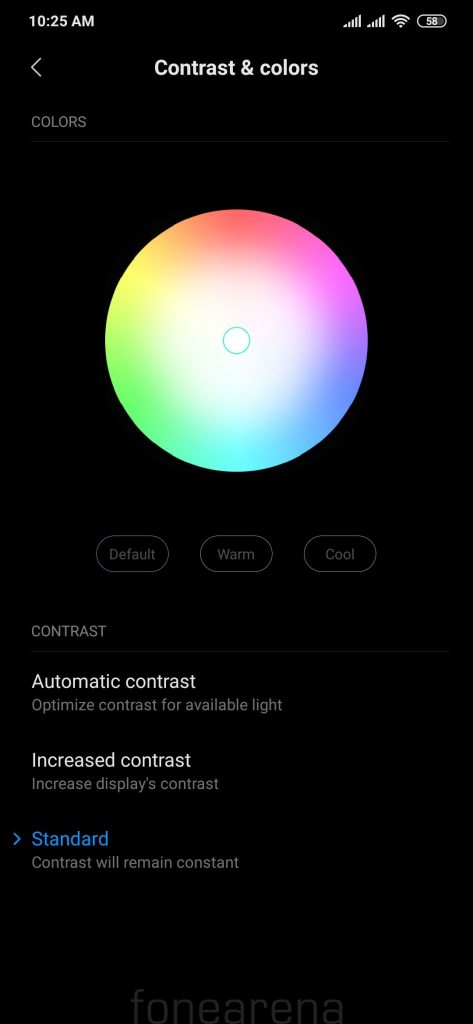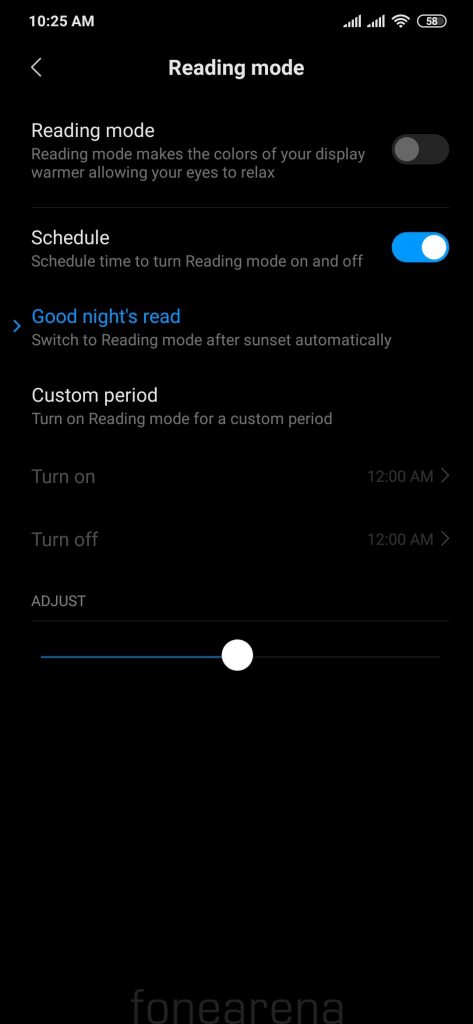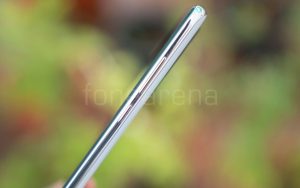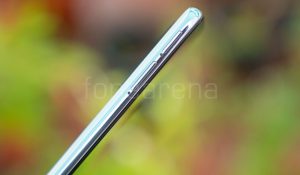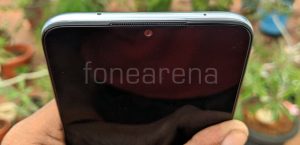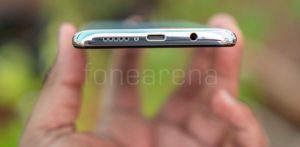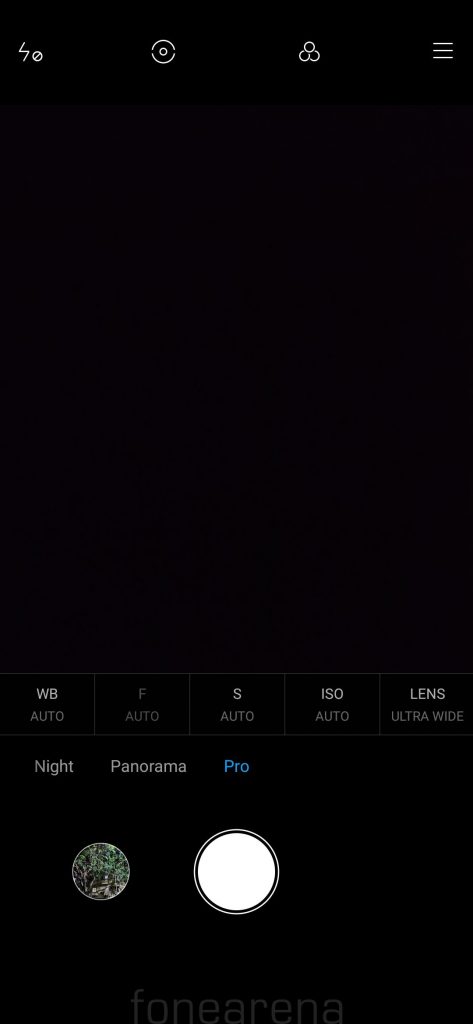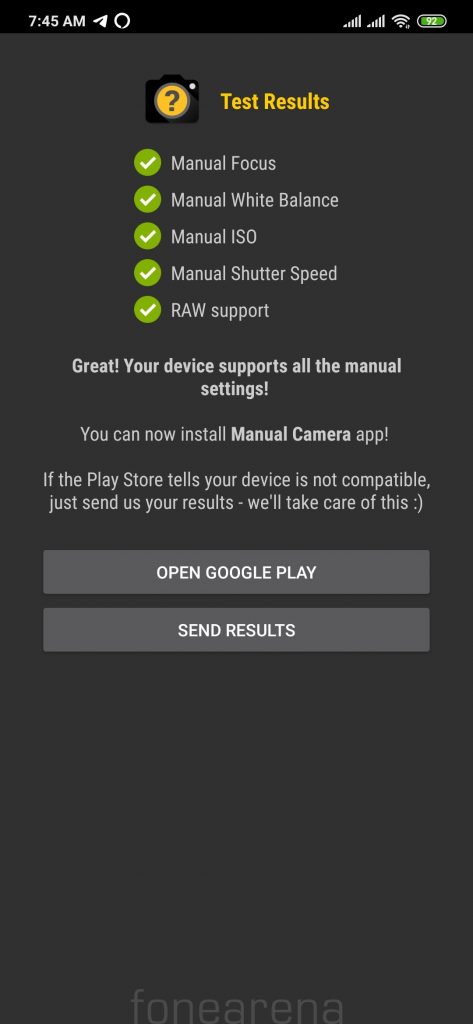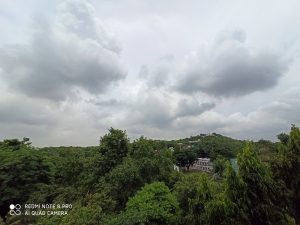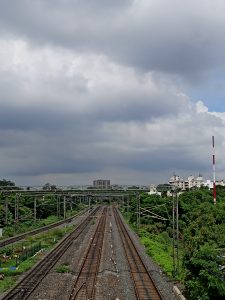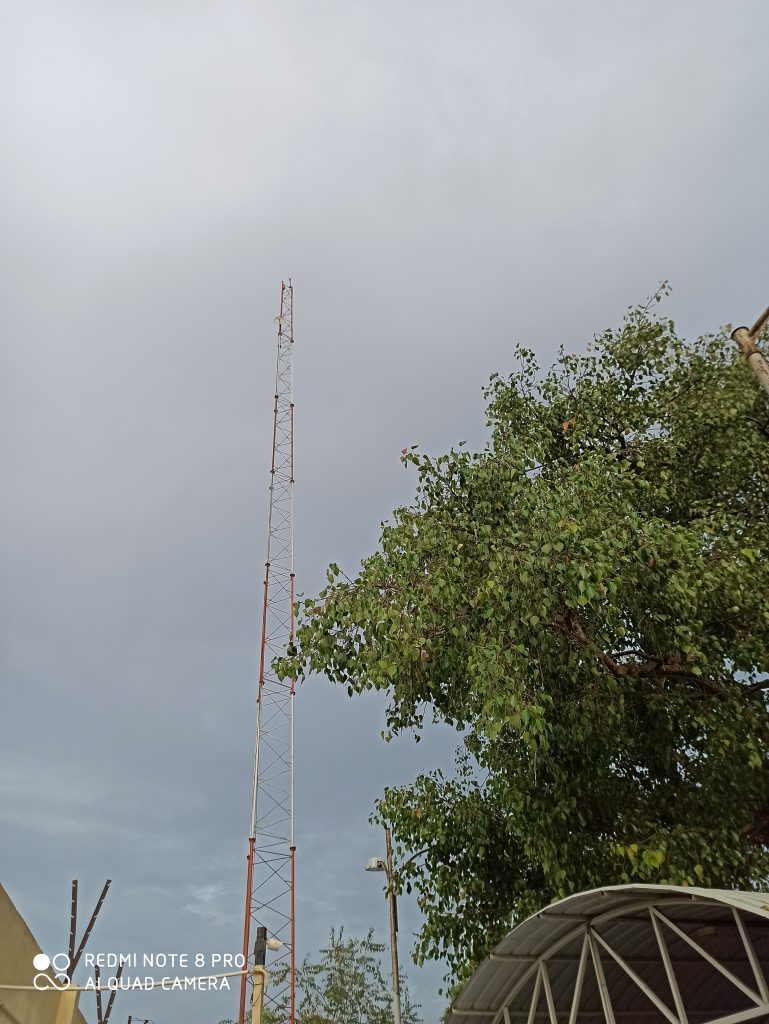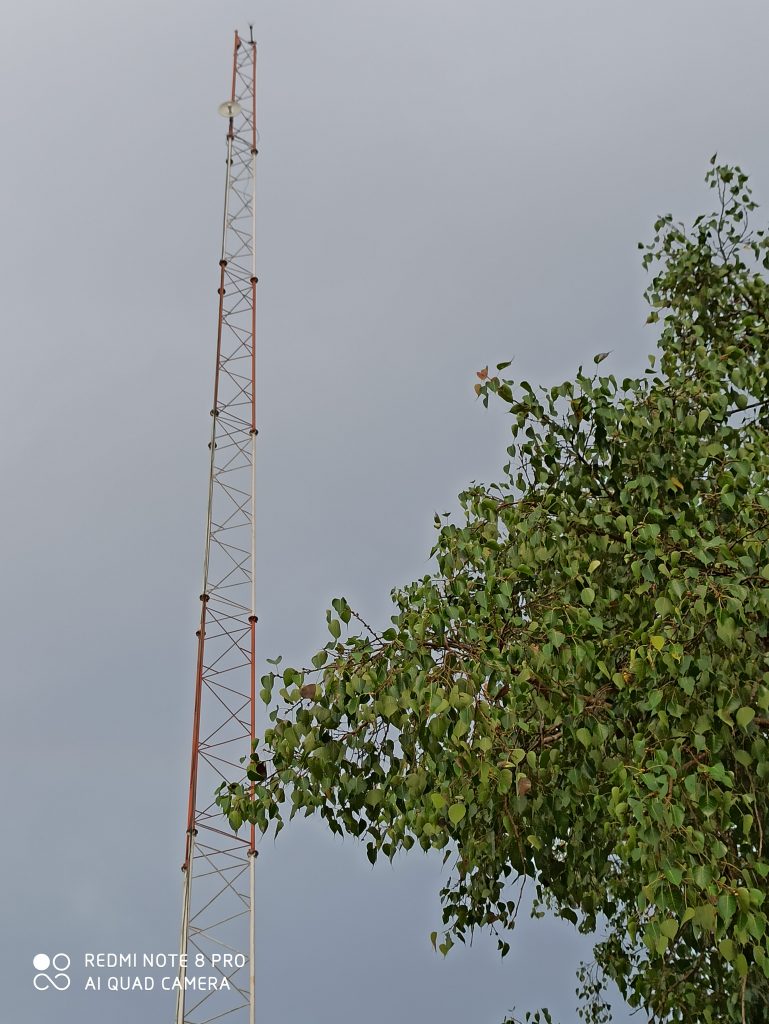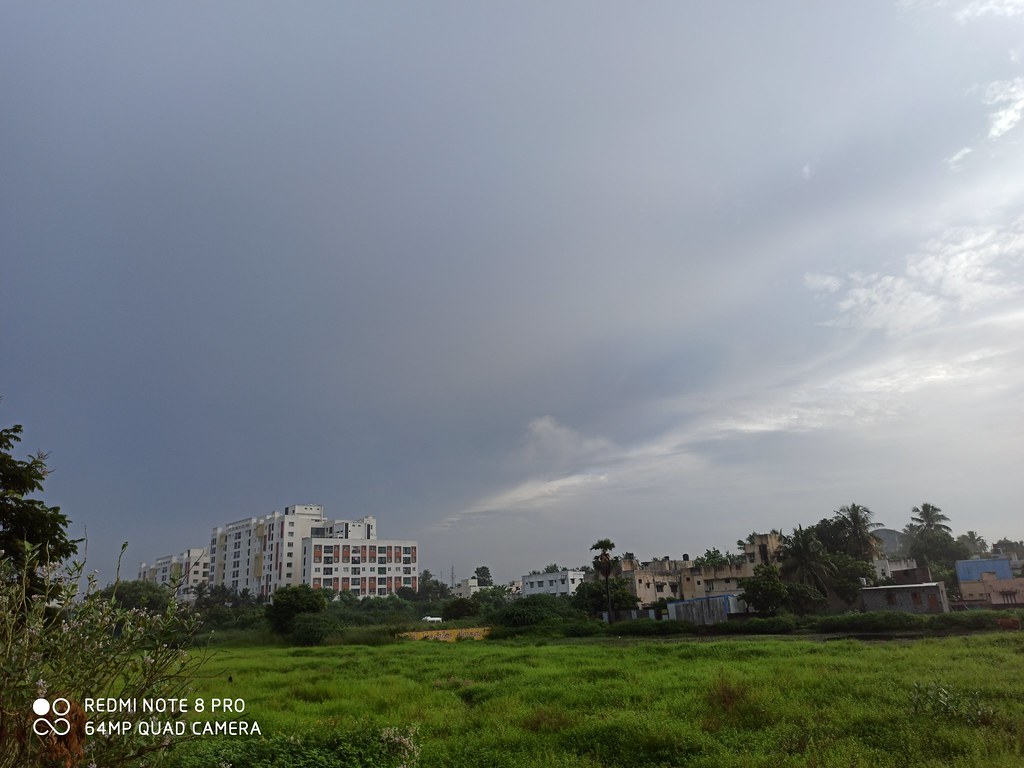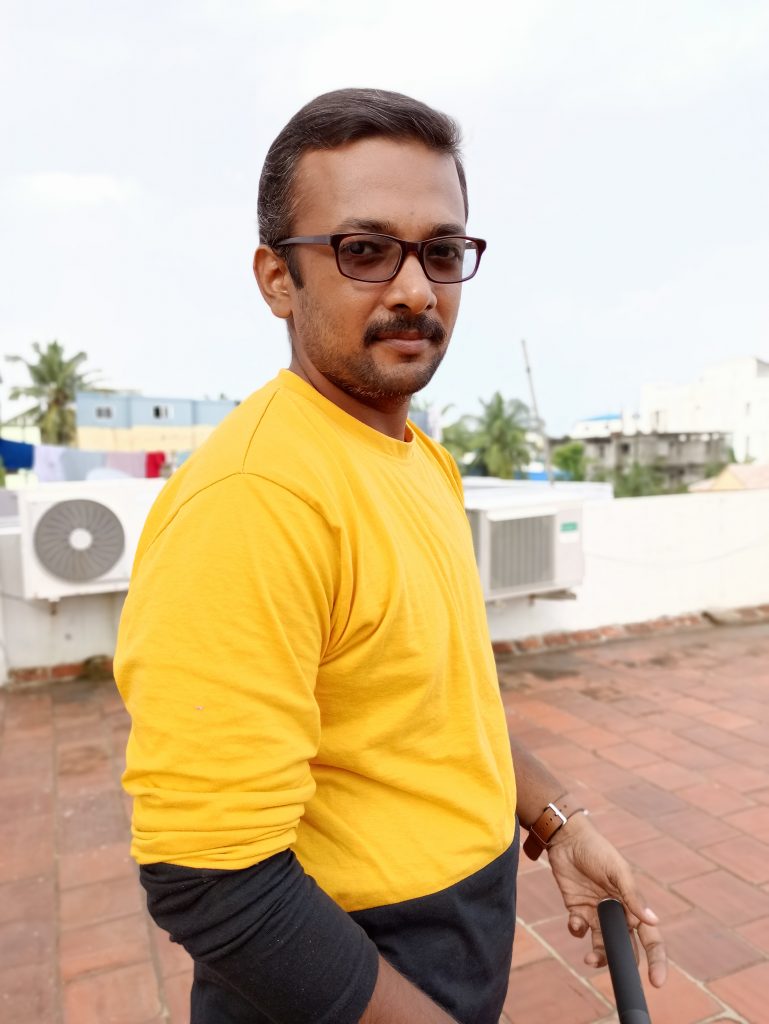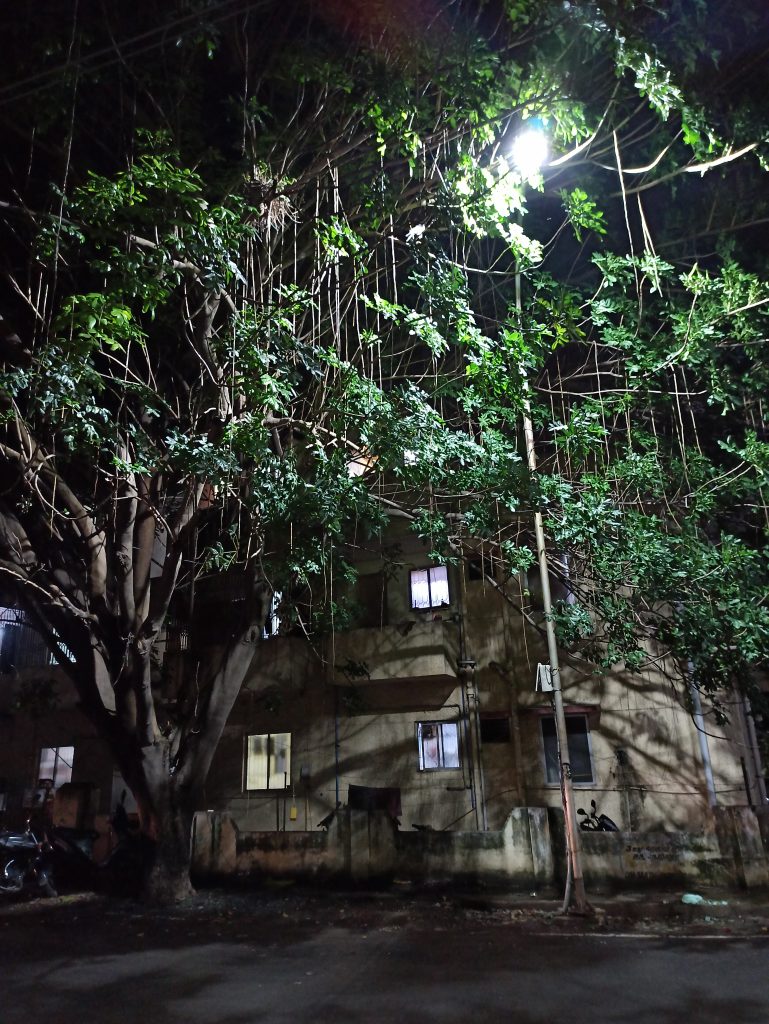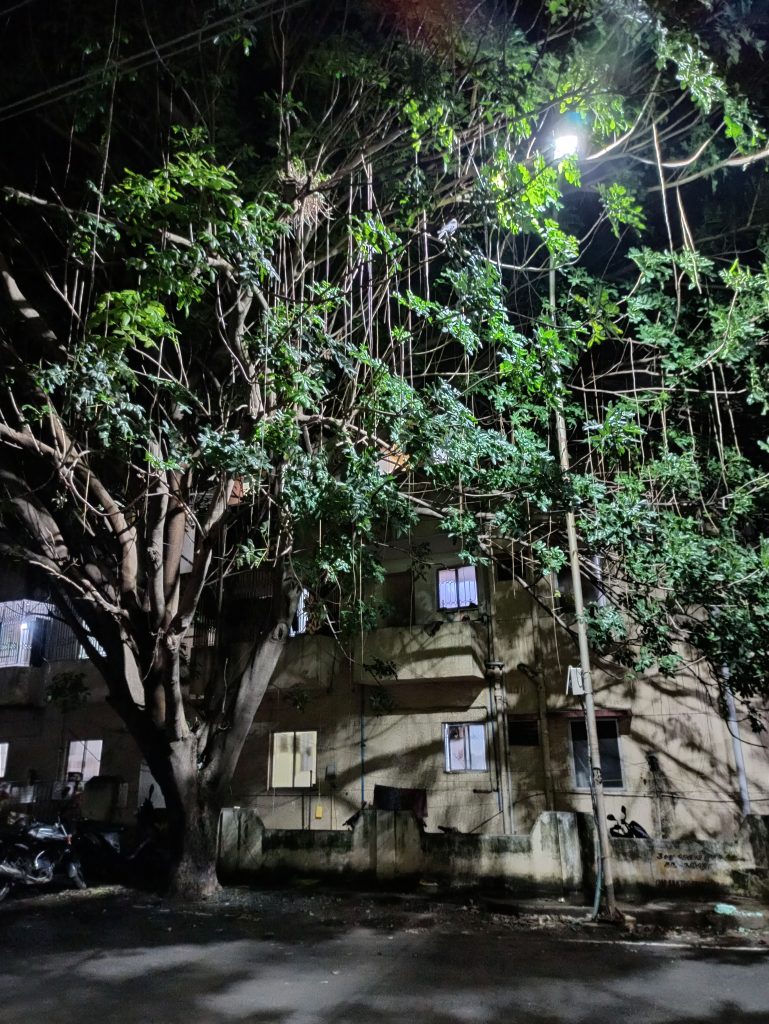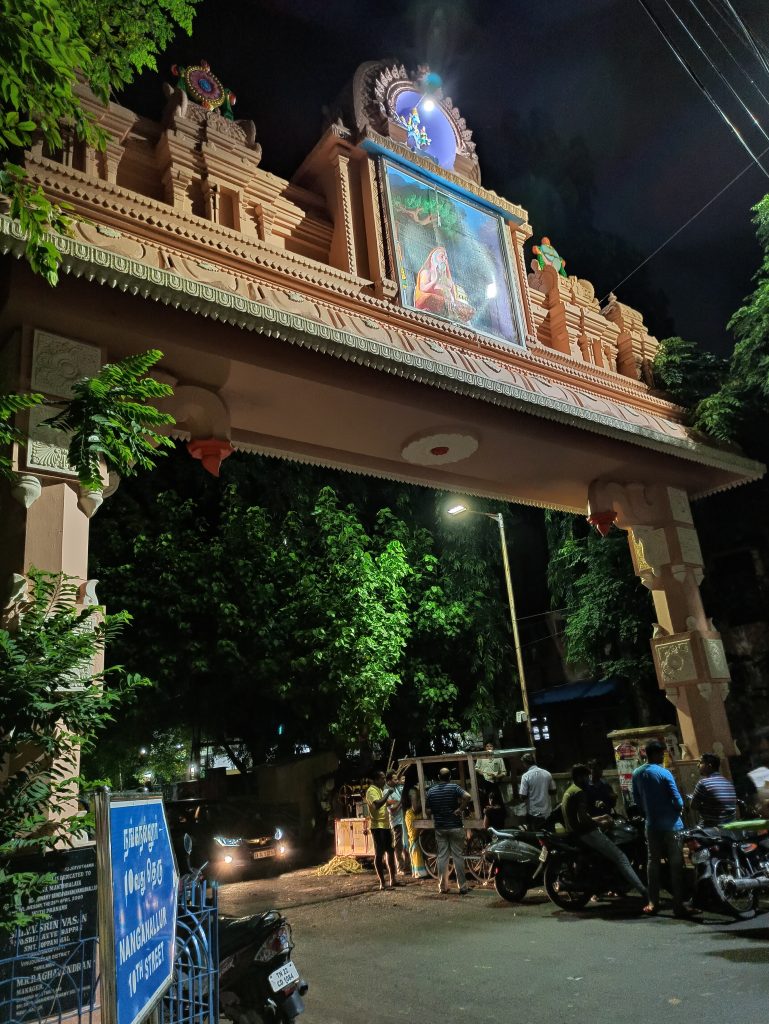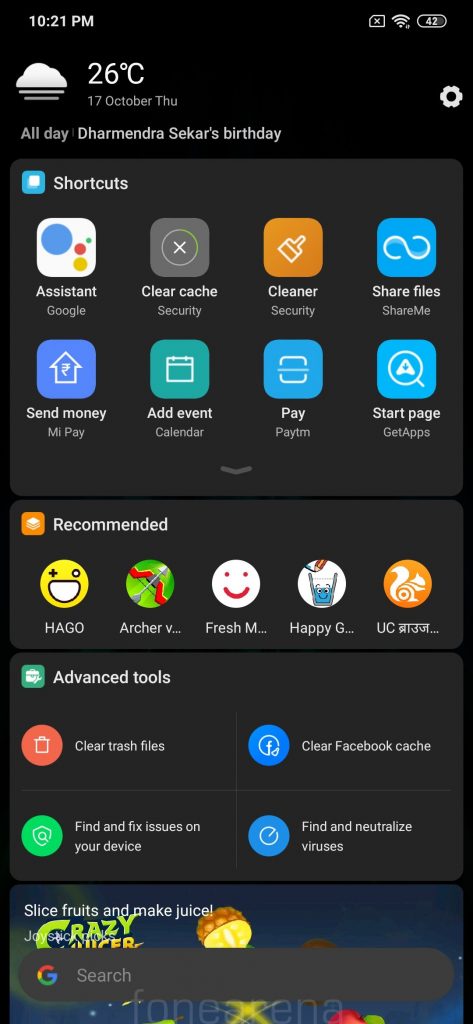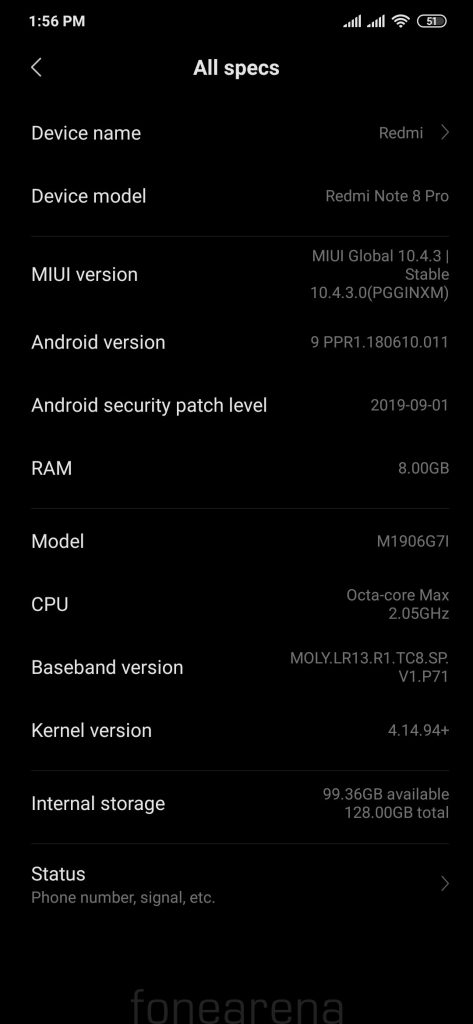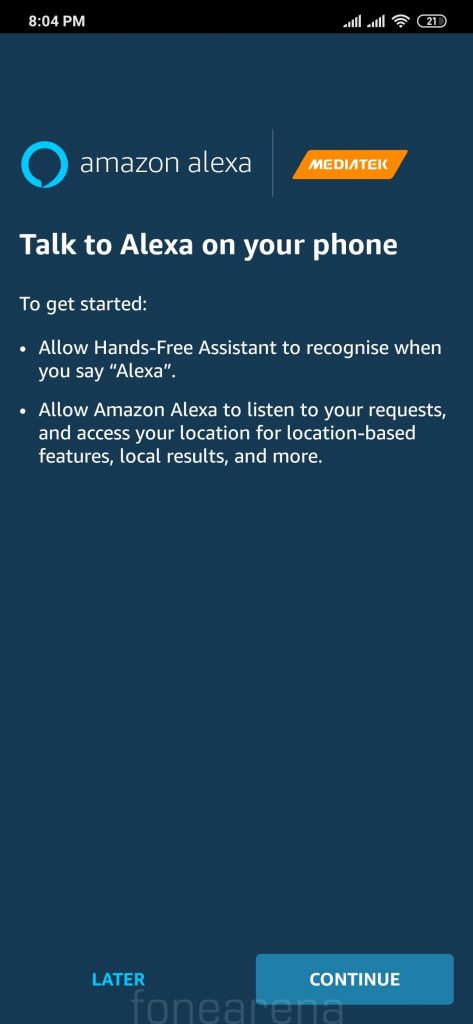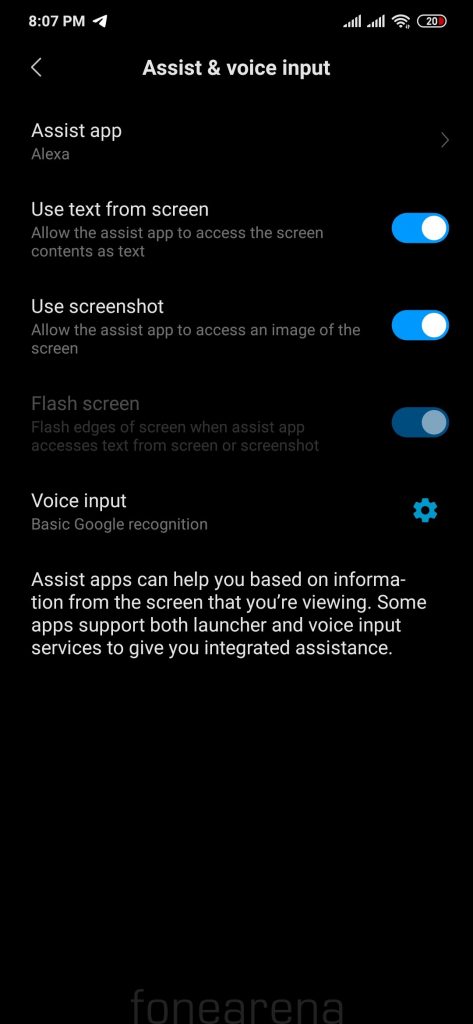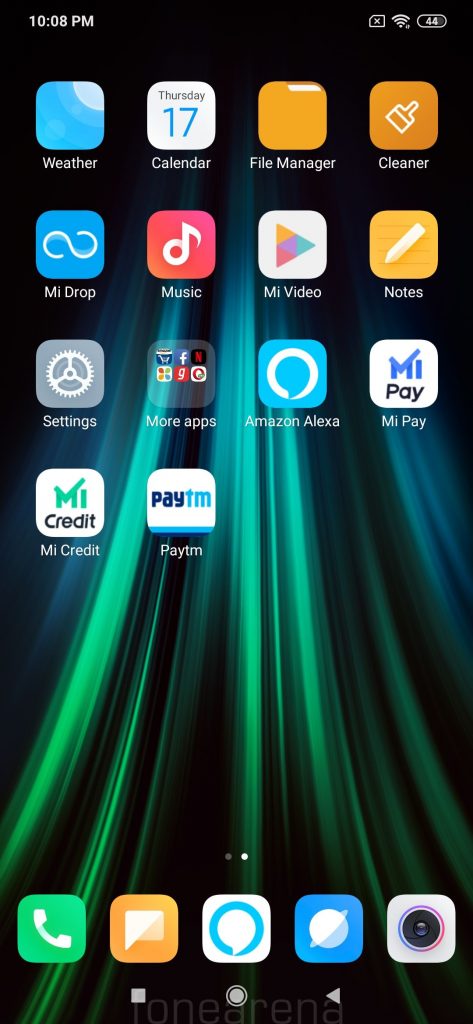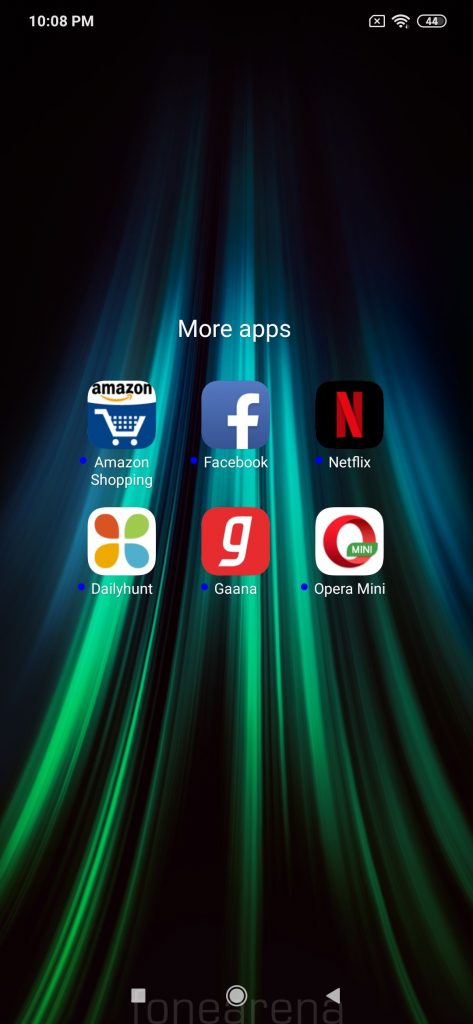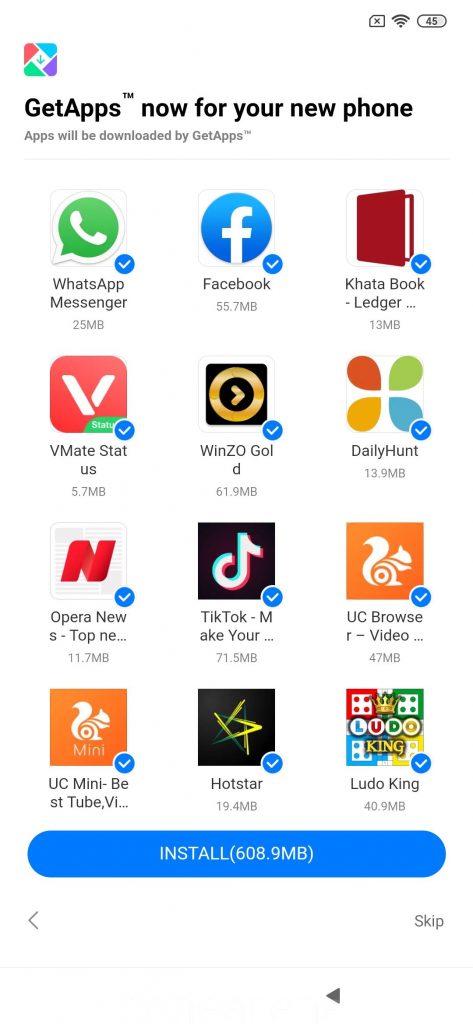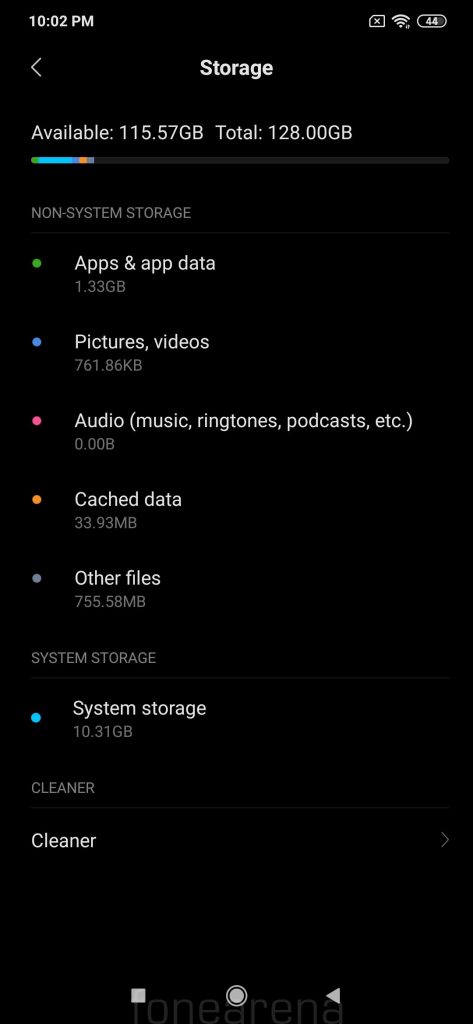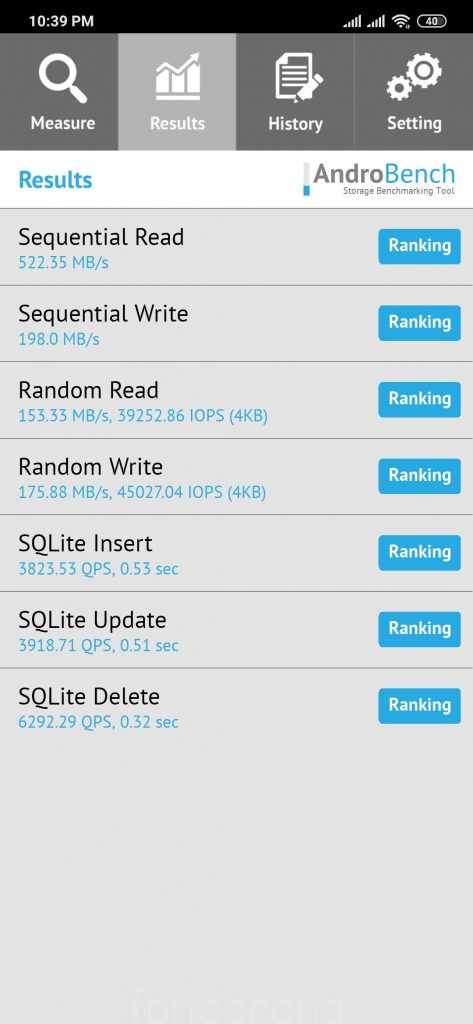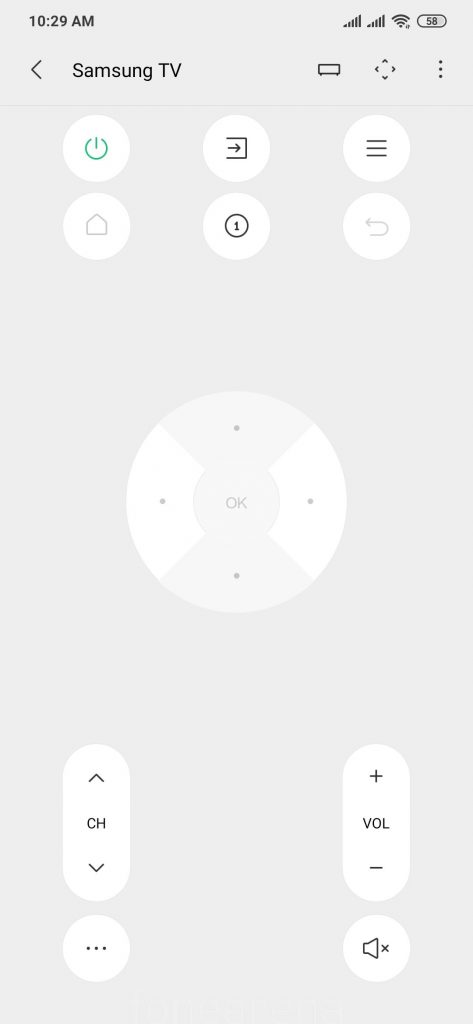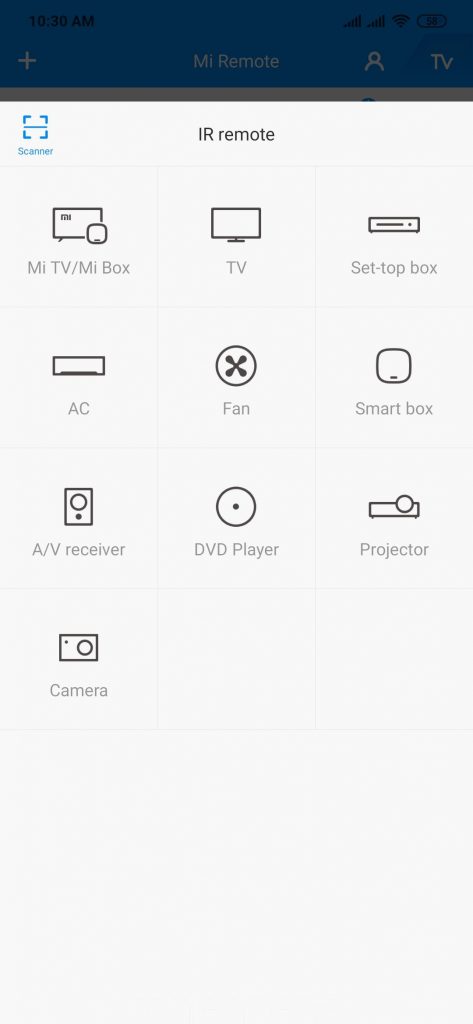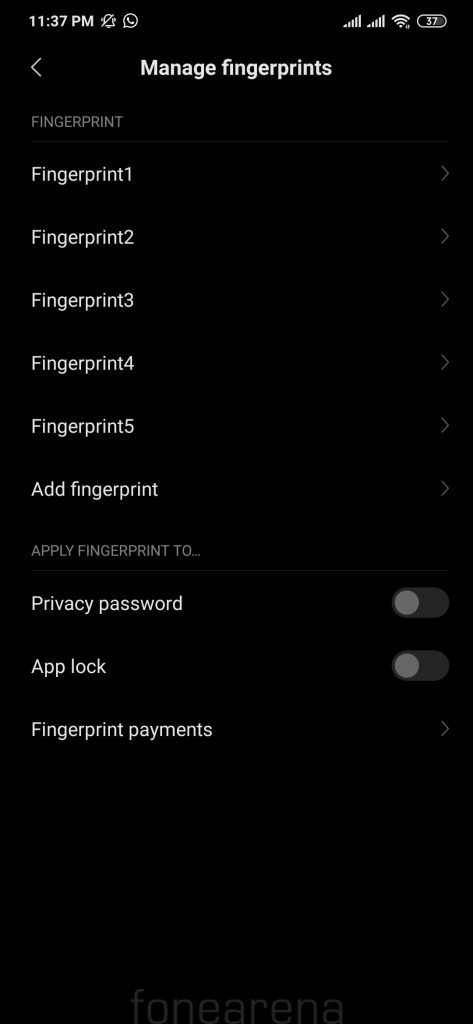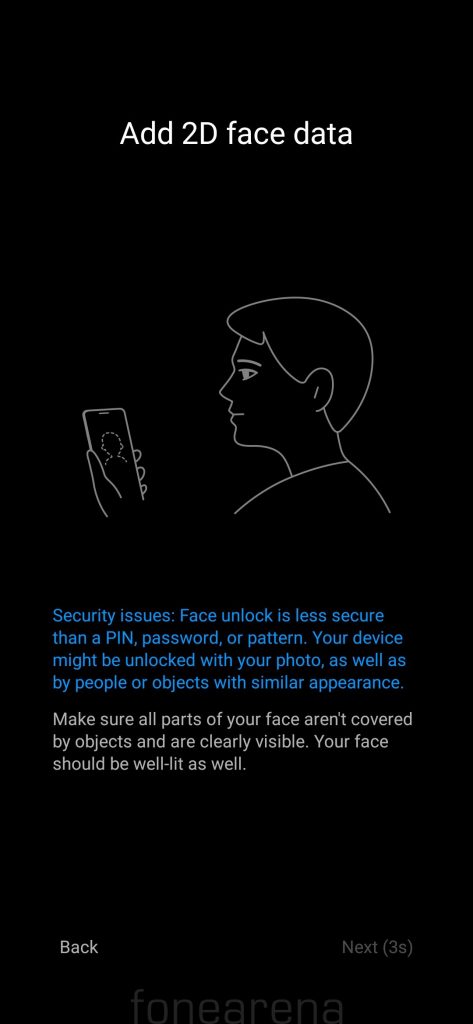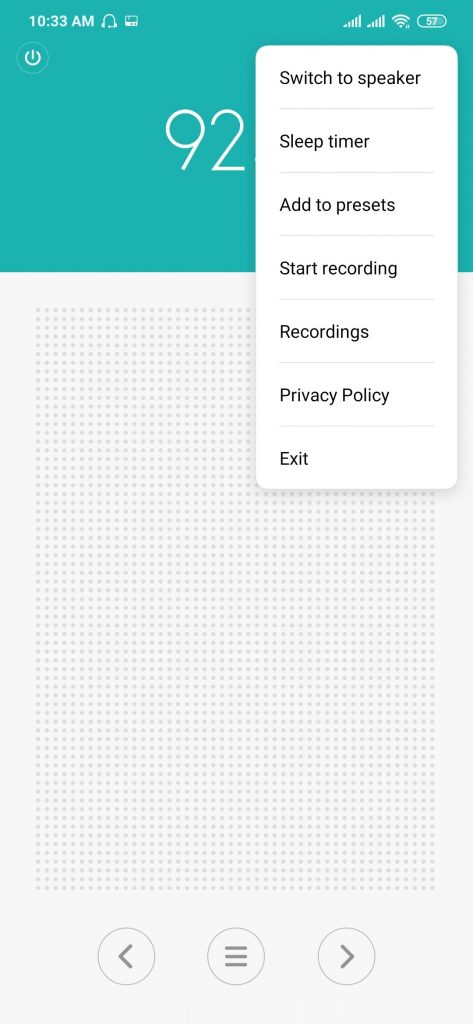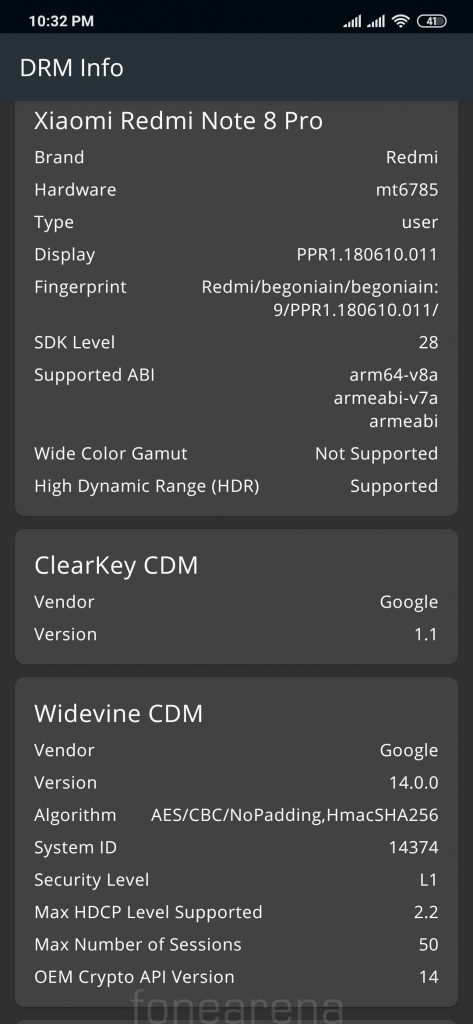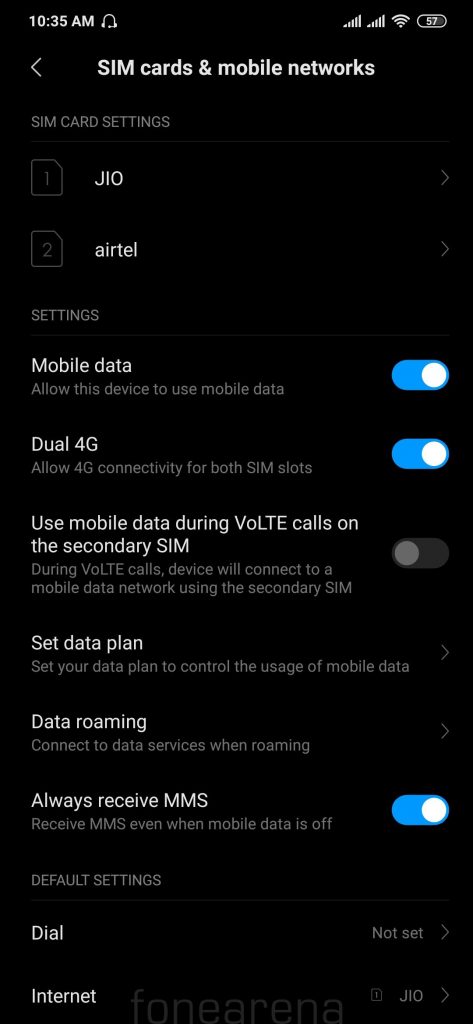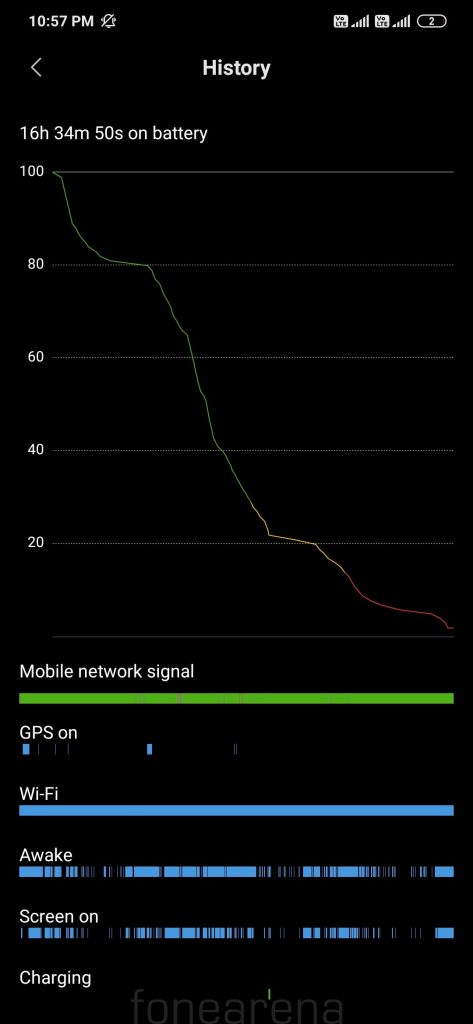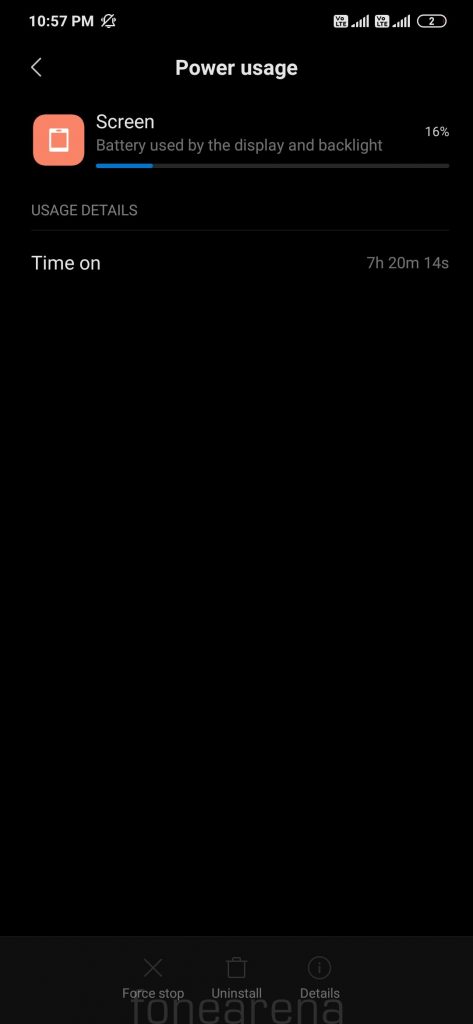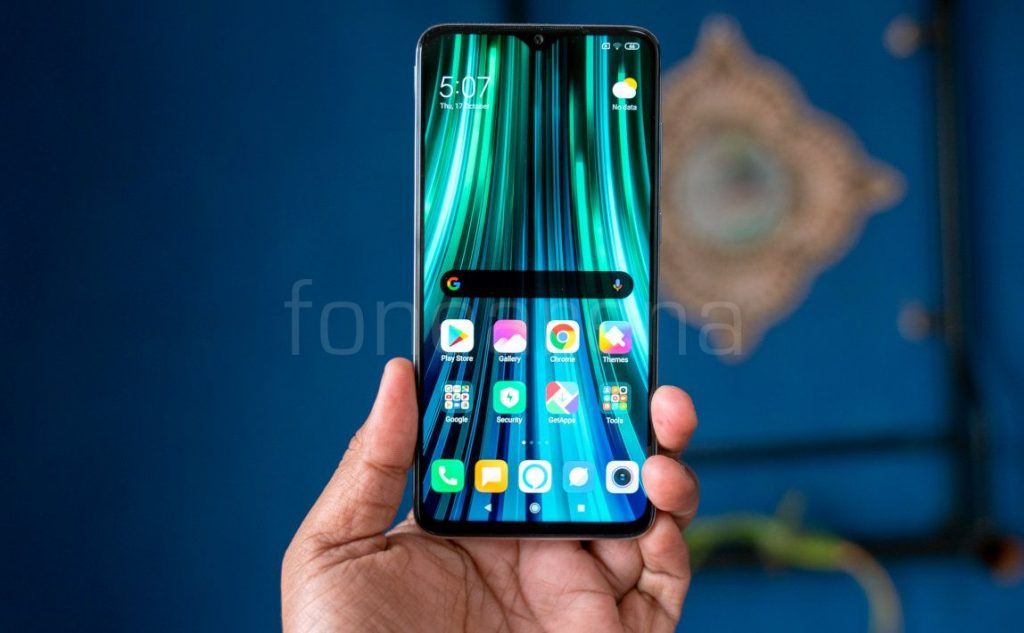
Xiaomi’s Redmi smartphones, especially the Redmi Note series is known for packing a lot of features making them value-for-money (VFM) devices. The Redmi Note 7 Pro that was launched was major upgrade, and once again the Redmi Note 8 Pro is another major upgrade in terms of display, camera, build quality, battery and lots more. You can check out all the new features in the Redmi Note 8 Pro here. The specifications look great on paper for the price. Let us dive into the review to find out what the device has to offer.
Box Contents
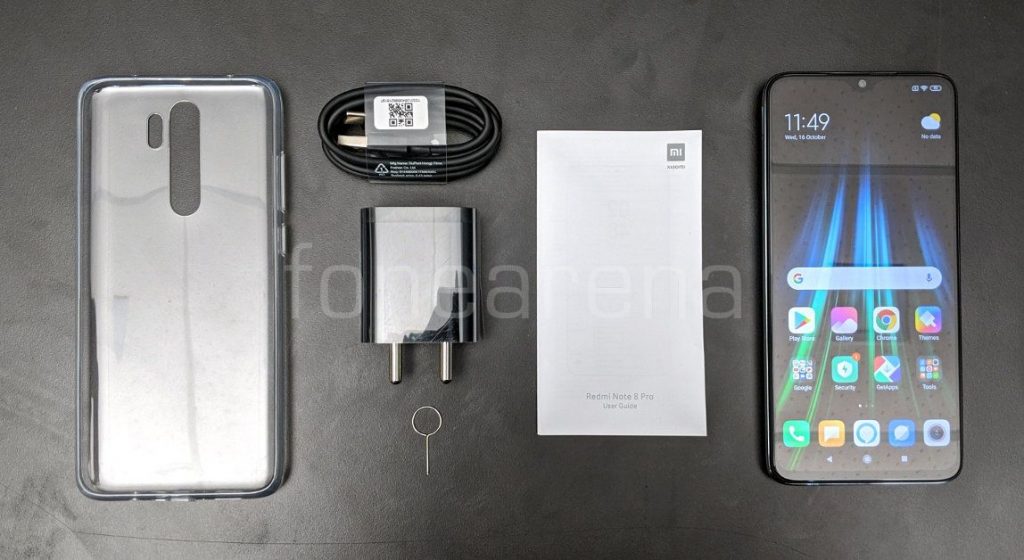
- Redmi Note 8 Pro smartphone 8GB + 128GB in Halo White color
- USB Type-C Cable
- 18W charger (5V-3A/9V/2A/12V-1.5A)
- SIM Ejector tool
- Clear protector case
- User manual and warranty information
Display, Hardware and Design

The Redmi Note 8 Pro has a Full HD+ ‘Dot Notch’ Full HD+ display with a pixel resolution of 2340 × 1080 pixels, 19.5:9 aspect ratio 2.5D curved glass screen with gentle rounded corners, same as the Note 7 Pro, but this has a slightly larger 6.53-inch screen size and a pixel density of about 394 PPI. The display is bright, thanks to 500 nits brightness and 1500:1 contrast ratio and the colors are vibrant since it has 84% of NTSC color gamut. Sunlight legibility is good, since it has a Sunlight display that uses hardware-level technology to adjust the contrast of each pixel in real time, so images are less affected by glare.
It also has HDR support, which works for supported YouTube videos and games like PUBG, but you can’t control it manually. The phone has Corning Gorilla Glass 5 protection. The phone has 1.8mm side bezels, and the company says it has 91.4% screen-to-body ratio, the highest ever in the price segment.
Since this has a 19.5:9 aspect ratio screen, you can pinch to zoom to fill the screen when you use video apps, but the content is cropped. There is also an option to hide the notch that adds a black bar on the top. Under the display options there are different options to adjust colors and contrast based on your preference. There is also reading mode that lets you reduce the display’s blue light emission so it doesn’t cause eye strain when you are reading at night, but this will be disabled when you play HDR videos. There is Dark mode, similar to other MIUI phones.
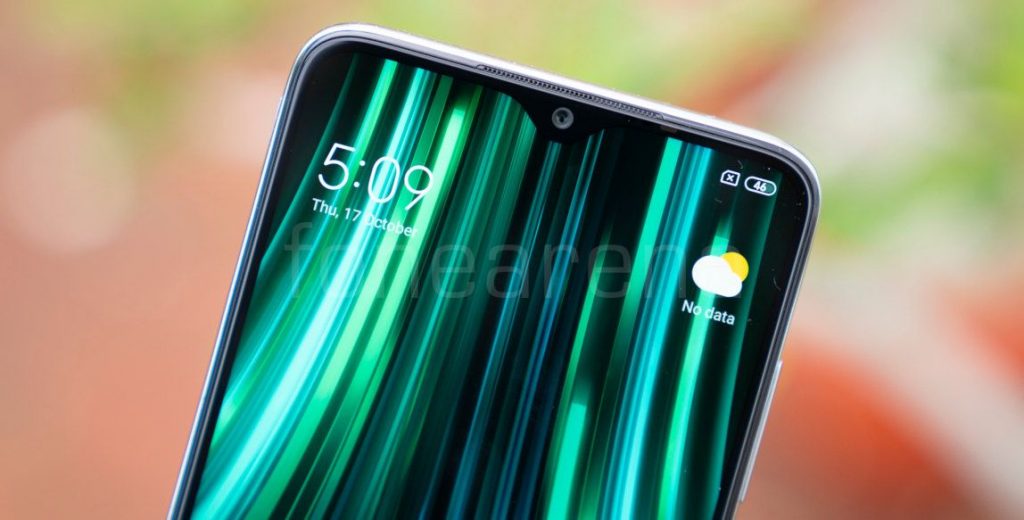
Above the display there is an earpiece on the top edge. The usual set of proximity and ambient light sensors are present on the 2.05mm bezel along with a notification LED, but these are hardly visible. It also has a gyroscope and a magnetic sensor, otherwise known as a magnetometer. There is also a 20-megapixel camera on the front with f/2.0 aperture.
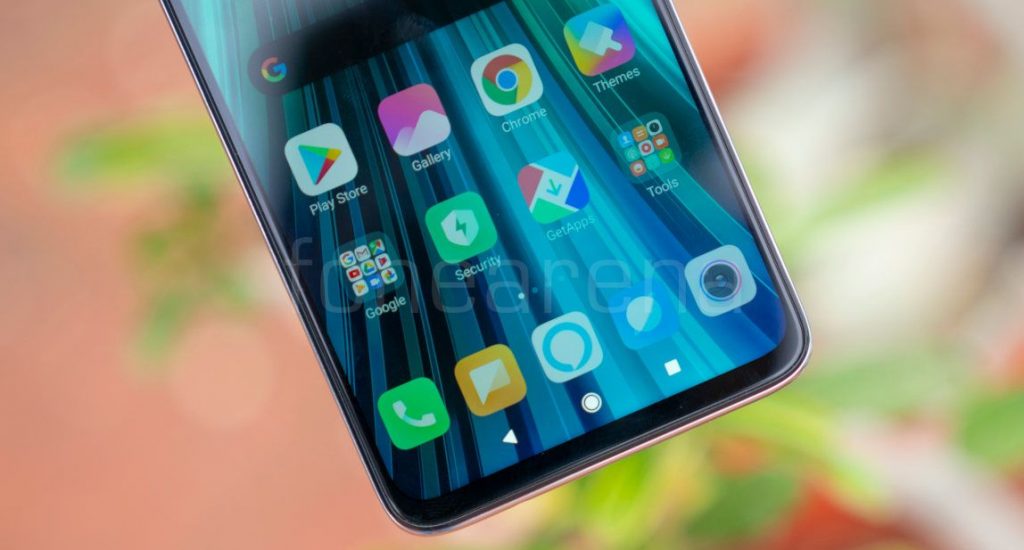
There is a small bezel below the display, which is smaller than the Redmi Note 7 Pro. Xiaomi says that they were able to achieve 4.2mm bottom bezel with chip-on-film technology by moving the display driver chip into the flex and fold it to the back side thus reducing the chin size.
Coming to the button placements, the power button and the volume rockers are on the right, SIM and microSD slots are on the left, and the company doesn’t miss out on the IR sensor, which is on the top, along with the secondary microphone. The USB Type-C Port, 1217SLS speakers grill, primary microphone and the 3.5mm audio jack are present on the bottom. There are no antenna cutouts that are clearly visible on the glossy frame, so it is not clear if this is metal.
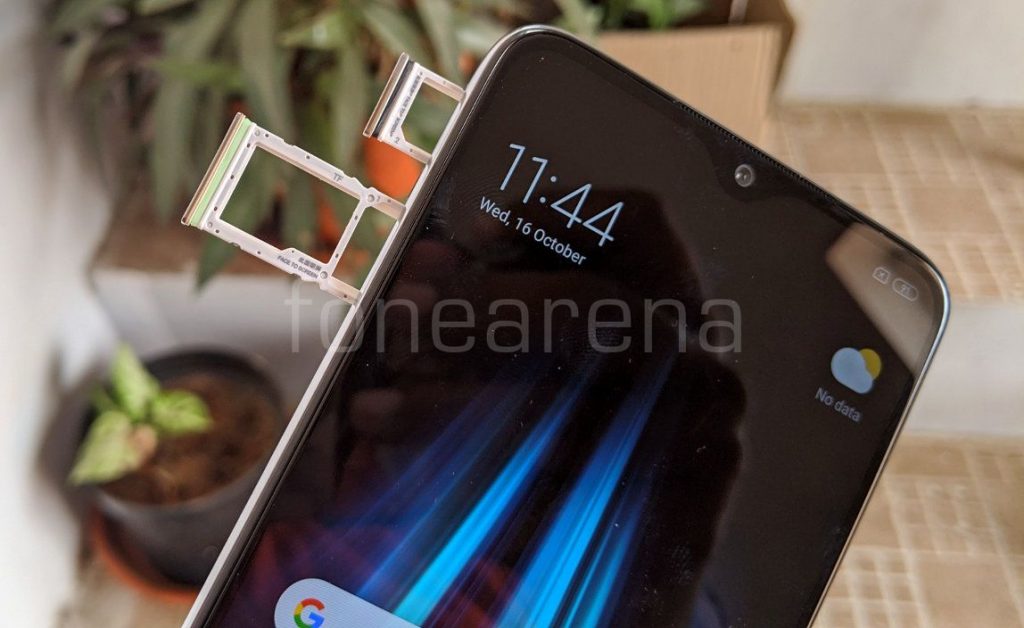
For India, the company offers dedicated dual SIM and microSD slots that can accept cards up to 256GB. This is also the first Redmi Note series phone to support this.
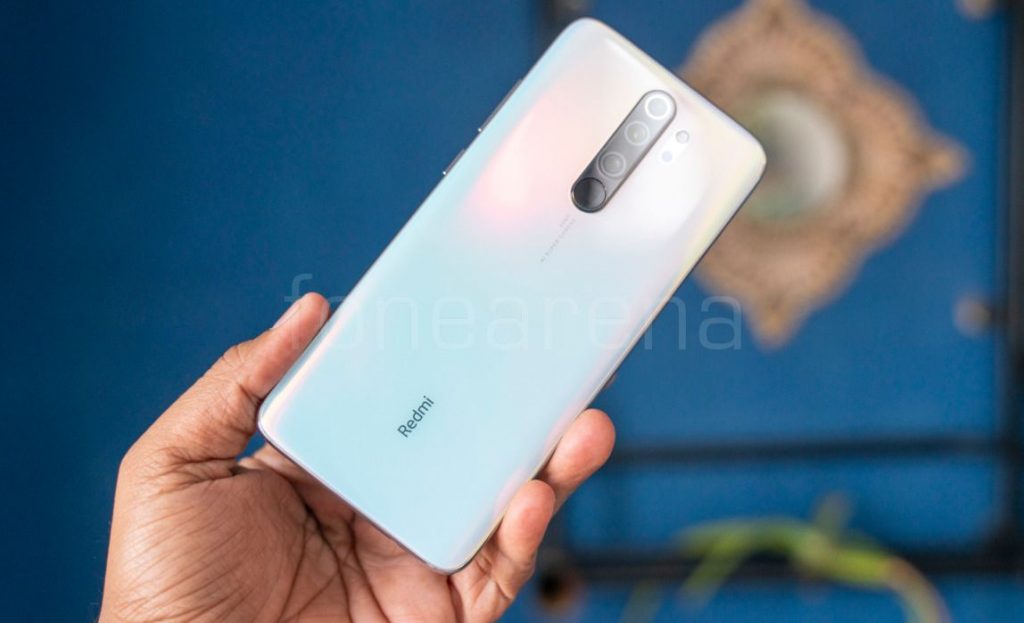
On the back there is a 64-megapixel camera along with an 8-megapixel 120-degree wide-angle lens, 2-megapixel depth sensor and a 2-megapixel macro camera on the side. There is also a fingerprint sensor below the camera module. This has slight camera bump due to the large sensor, so when the plastic around the camera gets scratched even with the case, but the camera lens is protected by a scratch-resistant glass. Even though the phone has a large screen, it is compact to hold. This has the Aura design with 3D glass on the back with Corning Gorilla Glass 5 protection. It definitely looks premium to look and hold.
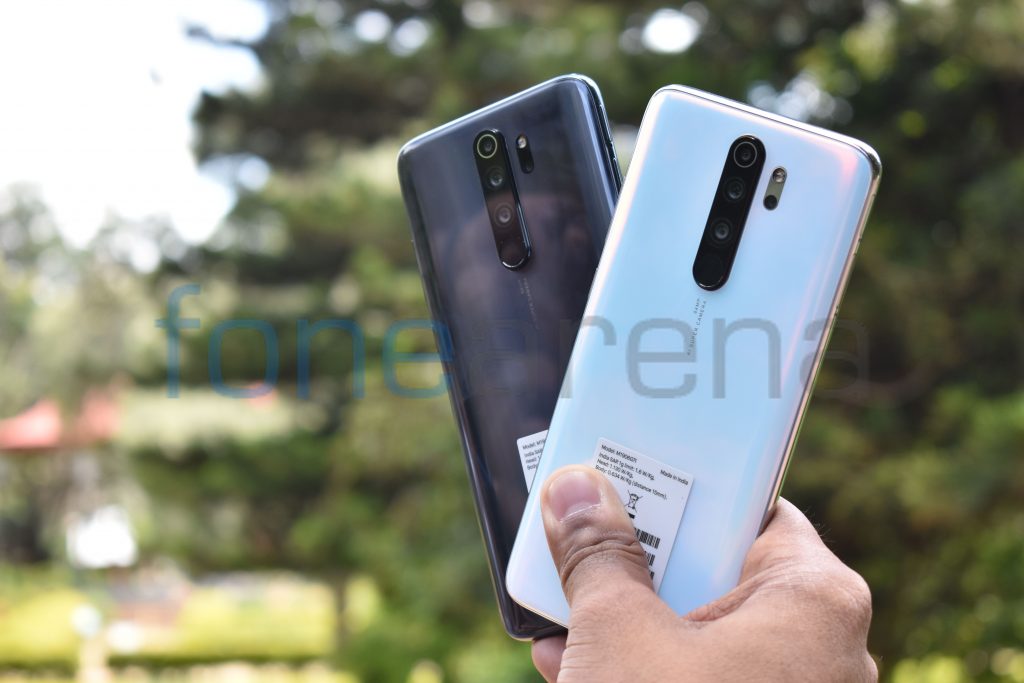
If you need a professional look, the phone also comes in Shadow Black color, but this doesn’t have that gradient finish.
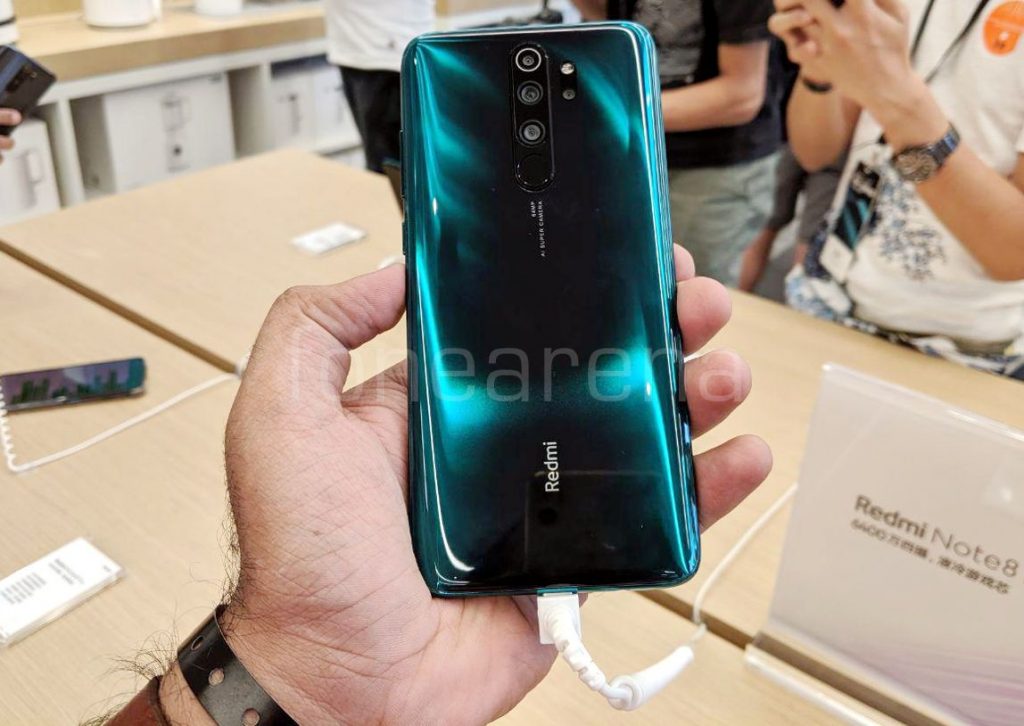
There is also a Gamma Green color, in which the gradient effect is more prominent. Compared to P2i nano coating in most Redmi phones, this is one of the first in the price range to come with IP52 ratings with watertight seals for buttons and ports, making it splash proof and it can also withstand light rain, but you still can’t immerse in water since it is not IP67 or IP68 rated. It packs a 4500mAh built-in battery, which is 12.5% more than the 4000mAh battery in the predecessor. It is a bit heavy at 200 grams since it has a glass body and a large battery, but the weight distribution is decent. Even the Redmi 8 and 8A were 188 grams with a 5000mAh battery.
Camera
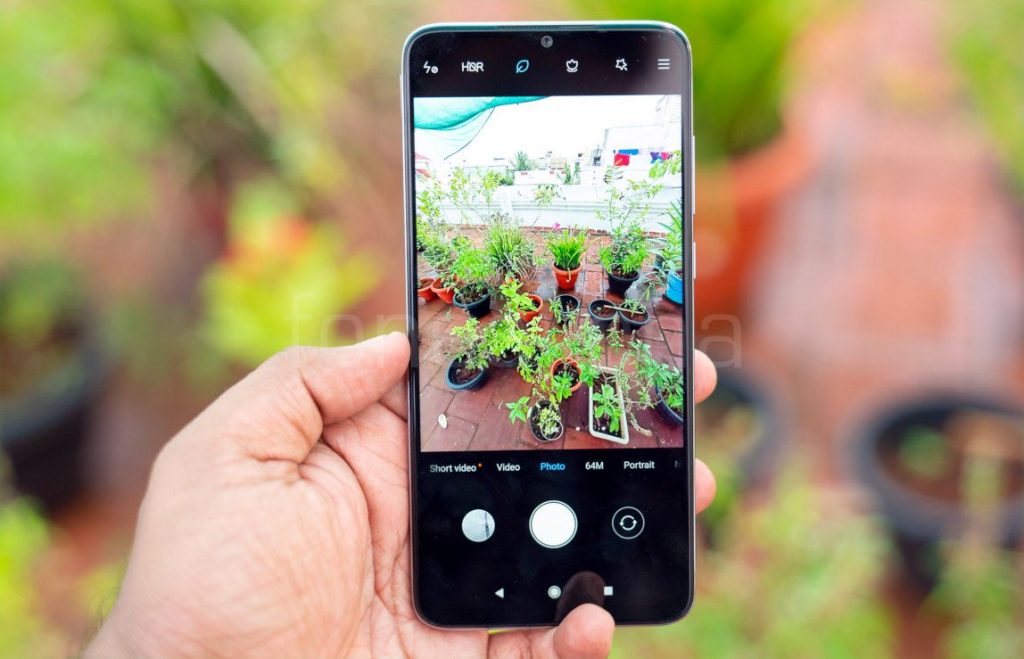
The phone packs quad rear cameras, that includes a main 64-megapixel primary rear camera with single LED Flash, 1/1.72″ Samsung GW1 ISOCELL sensor with Smart ISO and ISOCELL Plus technology, 0.8μm pixel size, f/1.8 aperture, has support for PDAF, EIS along with a secondary 8-megapixel camera with 120° ultra-wide angle lens with f/2.2 aperture, 1.12μm pixel size and a 2-megapixel depth sensor for portrait as well as 2-megapixel camera for 2cm macro with 1.75μm pixel size and f/2.4 aperture. It has a 20-megapixel front-facing camera with 0.9μm pixel size and f/2.0 aperture.
The camera UI is familiar with other Xiaomi smartphones running MIUI 10 with flash, HDR, AI, Macro mode, color modes (Normal, Vivid, Film, Amour, Latte, Sun, Cookie, Calm, Soda, Gourmet, Glow, Berries, B&W and Fade) on the top. Pressing the menu option shows camera frame, timer, tilt-shift, straighten and Google lens. There is a front camera toggle on the bottom along with option to select modes such as Slow motion, Short Video, Video, Photo, 64MP, Portrait, Night, Panorama and Pro mode to adjust white balance, focus, shutter speed (1/1000s to 32 seconds), ISO (100 to 3200) and option to select main, ultra-wide and macro lens. Beautify option for the front camera lets you adjust several features, in addition to smoothness.
Xiaomi has enabled Cam2API by default so you can side-load ported Google Camera APKs for advanced editing including RAW capture. Since the phone uses a MediaTek SoC, it is hard to find a working GCam port. We tried a few, and none of them worked perfectly.
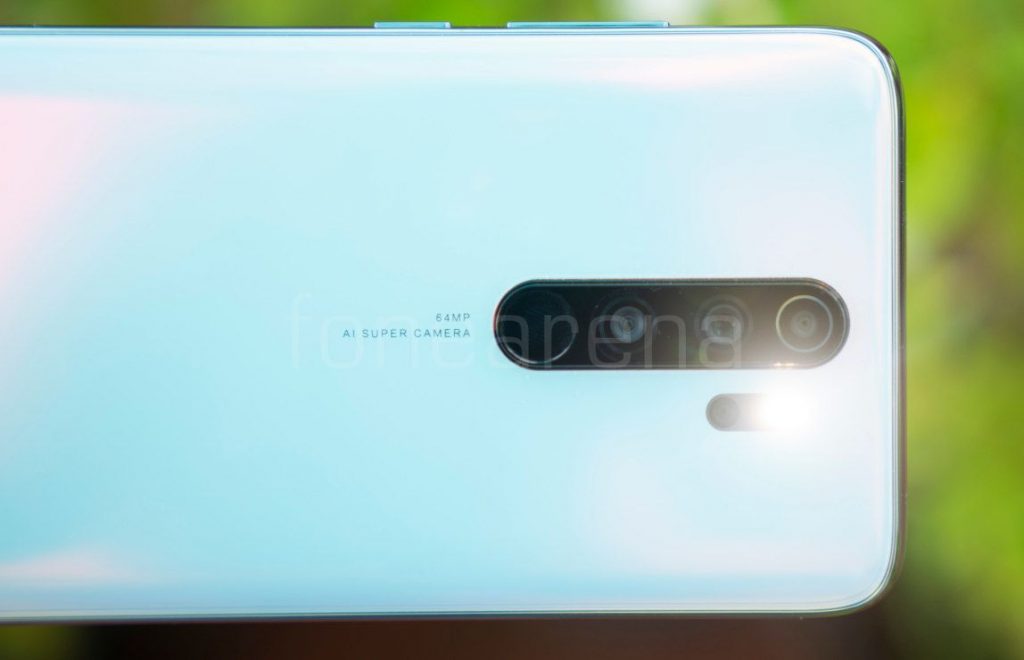
Coming to the image quality, daylight shots came out well with good dynamic range, thanks to the large sensor. After pixel binning you get 16MP output. HDR shots are better with improved dynamic range, and macro shots are good as well with good amount of details. The dedicated 2MP macro sensor does an amazing job in capturing the details without any blur even when you go as close as 2cms, but some times the colors are a bit over saturated. Wide-angle shots are good as well, and the portrait shots have good edge detection. 64MP mode that offers a lot of details, but some images can go up to 30MB in size. That’s the reason we couldn’t upload a sample in WordPress, but we have uploaded it on Flickr and embdedded it. Even though there is no telephoto lens, it uses the software for offering 2x zoom, which might be handy sometimes.
Low-light shots are good, thanks to 4-in-1 Super Pixel technology that lets the camera’s sensor hardware combine 4 pixels into a single 1.6μm large pixel, and the night mode is even better making the images brighter offering more details, but there is noise when there is hardly any light. Images with flash are good and the flash is not overpowering. Daylight front camera shots are good, and low-light shots are just average. The output is 20MP in resolution, but the image size is around 4MB. Portrait shots have decent edge detection.
Check out the camera samples (Click the image to view the full resolution sample.).
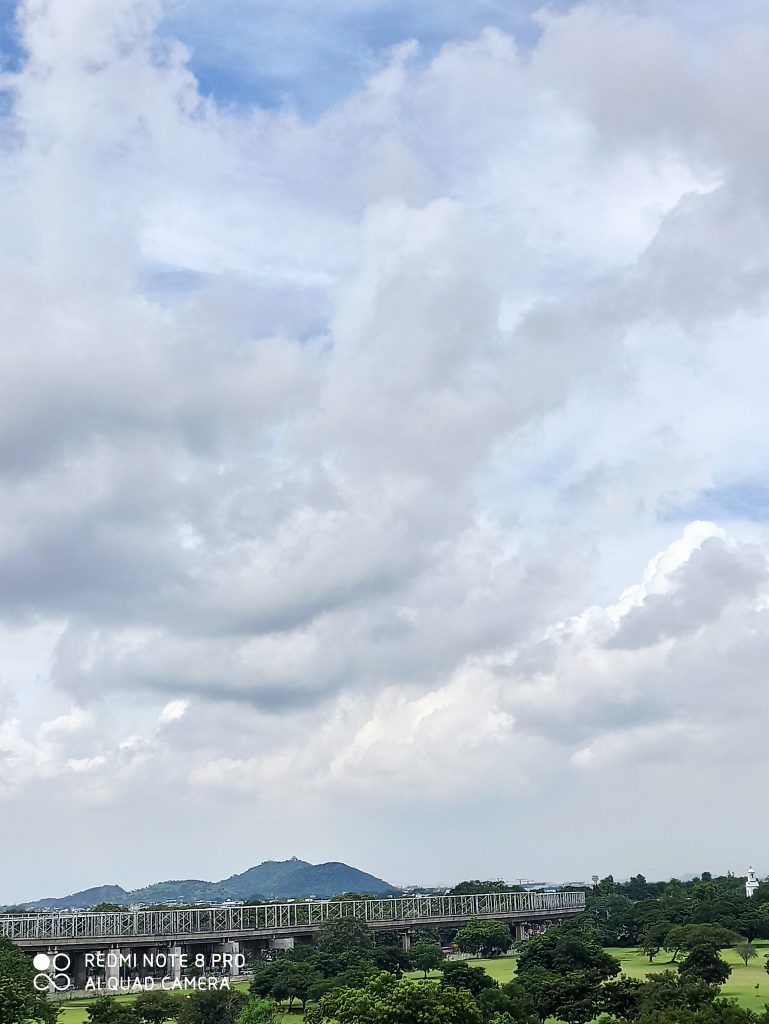
64MP
Macro Camera
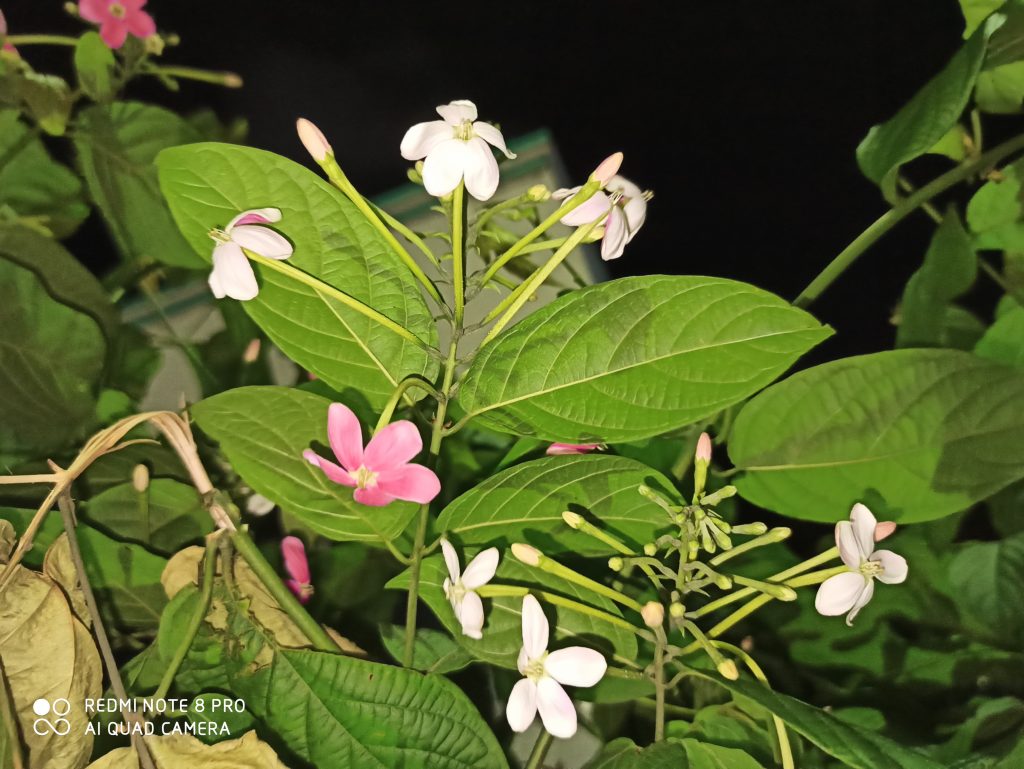
It can record videos at 4k resolution at 30 fps, 1080p at up to 60 fps, and it also has slow motion 720p resolution video recording at up to 960fps, but this should be 240fps converted into 960fps since the MediaTek Helio G90T officially supports only up to 240fps slow motion recording. You can also shoot 720p videos using the macro camera and 1080p 30 fps videos using the ultra-wide camera. Check out the video samples below.
Check out the complete set of camera samples here.
Software, UI and Apps
It runs Android 9.0 (Pie) out of the box with MIUI 10.4 on top. It recently got Android security update for September, 2019. MIUI 10 that was introduced last year brings several features including full-screen hand gestures and improved recent menu that takes advantage of the full-screen displays, improved single-finger swipe down gesture to expand notifications, redesigned volume sliders and more. The company has already confirmed that it will get MIUI 11 in December. It should get Android 10 as well, but the company has not announced a timeline for this. It has all the usual set of features such as Dual Apps, Second Space, App Lock, Quick Ball and more.
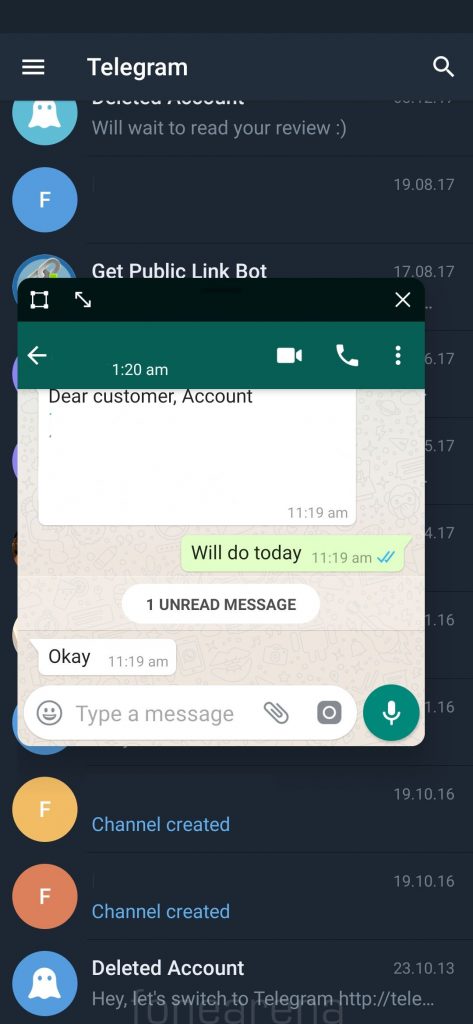
Inside the special features option there is Quick replies feature, similar to Android 10. This shows WhatsApp notification in a pop-up box when you are watching YouTube videos or in other apps. This is a useful feature, but it currently works for WhatsApp, so it looks like Telegram and other apps should enable this from their side.
Another interesting feature is the deep integration with Amazon Alexa. This works like the Google Assistant to listen to your commands. You can also enable the option to enable it even when the phone is locked, but this will drain the battery.
Apart from the usual set of utility apps, Google apps and Xiaomi’s own set of apps, it comes pre-loaded with Amazon Shopping, Facebook, Netflix, Dailyhunt, Gaana,, Opera Mini and more apps. It also asks for additional app installation during setup, which you can skip. You can easily uninstall these apps, but these come up when you reset the phone.
Out of 8GB RAM, you get 7.69GB of usable RAM, and about 4.5GB of RAM is free when default apps are running in the background. Out of 128GB internal storage, you get about 115GB of free storage. Since this has UFS 2.1 storage, we got sequential read speeds of about 522MB/s, which is more than some of the UFS 2.1 phones we tested, which got less than 500Mb/s. The built-in Cleaner inside the storage lets free up space by clearing cache and obsolete files.
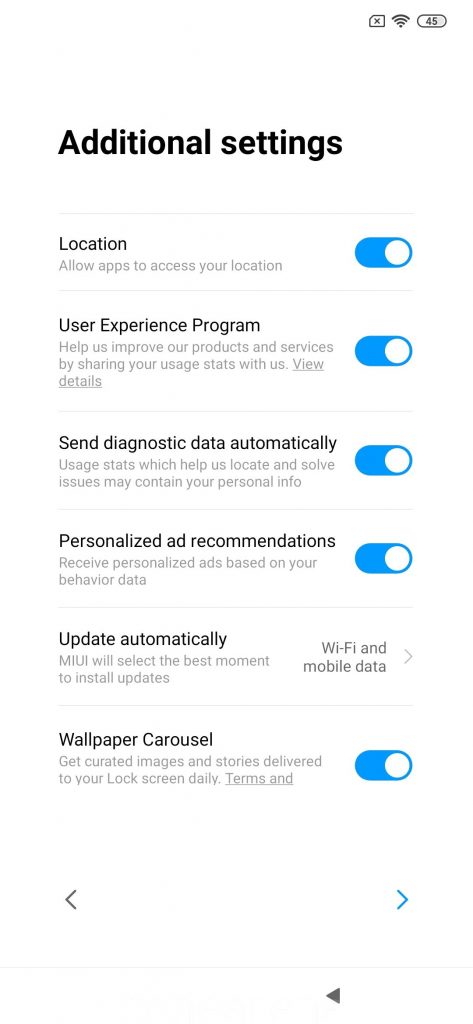
Xiaomi is infamous for showing ads on its phones with MIUI, which the company says is done in order to support the development cost of its own apps. If you don’t want to see ads, you have to disable recommendations while setting the phone up, promoted apps and in Xiaomi’s own apps such as Music, Mi Video, File Manager, Mi Drop, App Vault, Cleaner, and others. You can also uninstall these apps by following the procedure here without rooting the phone.
Since the phone has an infrared sensor for remote function, it comes with Mi Remote that lets you control your home appliances easily. It worked flawlessly with Samsung TV, Airtel Set-top box, Ogenral AC and other appliances. It also supports A/V receiver, DVD Player, Projector, Camera and more.
Fingerprint sensor and Face unlock
The phone has a fingerprint sensor on the back. It immediately unlocks phone just by keeping your finger on the home button so that you don’t have to press it. You can add up to 5 fingerprints. You can also use the fingerprint for app local and payments in apps. The phone also has face unlock, but it is not as secure as fingerprint since it can be unlocked with a photo. It also doesn’t work if you use sunglasses or hats.
Music Player, FM Radio and Multimedia
The Mi Music Player is the default music player with usual Xiaomi audio effects and equalizer. It also has FM Radio with recording. Audio through the speaker is loud, thanks to 1217SLS 10V speaker. It also has self-cleaning technology that Xiaomi is introducing auto cleaning speaker technology that purges obstructions and dust from the speaker cavity with the help of low-frequency sound waves of 800 Hz. Since the speaker is present on the bottom, audio doesn’t get muffled when the phone is on a flat surface. Audio through earphones is good.
DRM Info app shows it has Widevine L1 support, but we couldn’t play HD content on Netflix or Amazon Prime Video. We have asked Xiaomi for clarification regarding this since the Redmi Note 8 supports HD playback on both Netflix and Prime Video.
Dual SIM and Connectivity
It supports 4G VoLTE for Reliance Jio and Airtel as well as support Dual 4G VoLTE that offers 4G in both the SIM cards at a time. There is Cat-12 LTE modem. Other connectivity options include Dual-Band Wi-Fi 802.11 ac with X antenna design for better Wi-Fi connectivity when gaming, Bluetooth 5.0 LE and GPS. It also has USB OTG support that lets you connect USB drives. The dialer and messaging UI are similar to other Xiaomi smartphones running MIUI 10. Since this is a dual SIM phone, you get the option to select either SIMs when calling or sending a text message. Moving on, the call quality is good, and we did not face any call drops and the earpiece volume was loud.
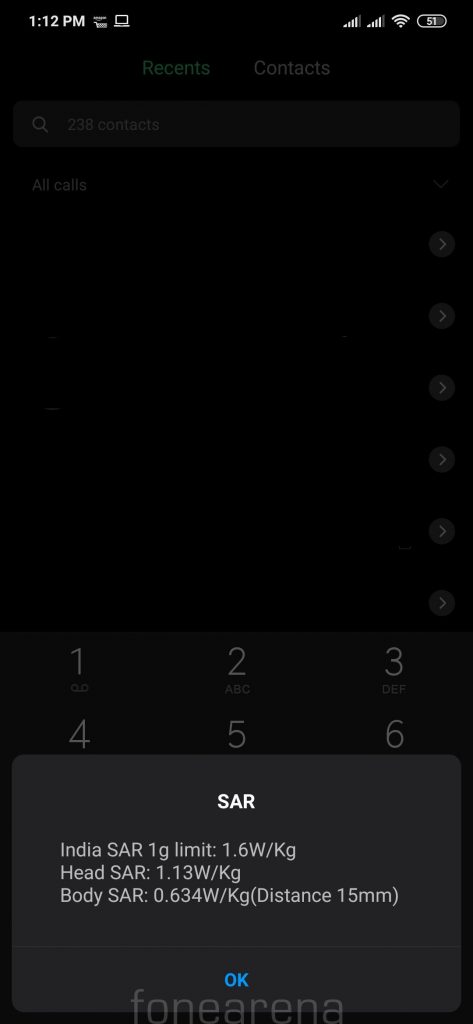
We don’t really mention SAR values for phones in our reviews since most are below 1W/kg, even though the limit in India is 1.6 W/kg (over 1 g). Even though the Redmi Note 8’s body SAR is 0.634W/Kg (Distance:15mm), head SAR is at 1.13W/Kg which is slightly more compared to other phones Xiaomi sells in India currently. We would recommend to use a headset or a Bluetooth headset if you are making long calls.
Performance and Benchmarks
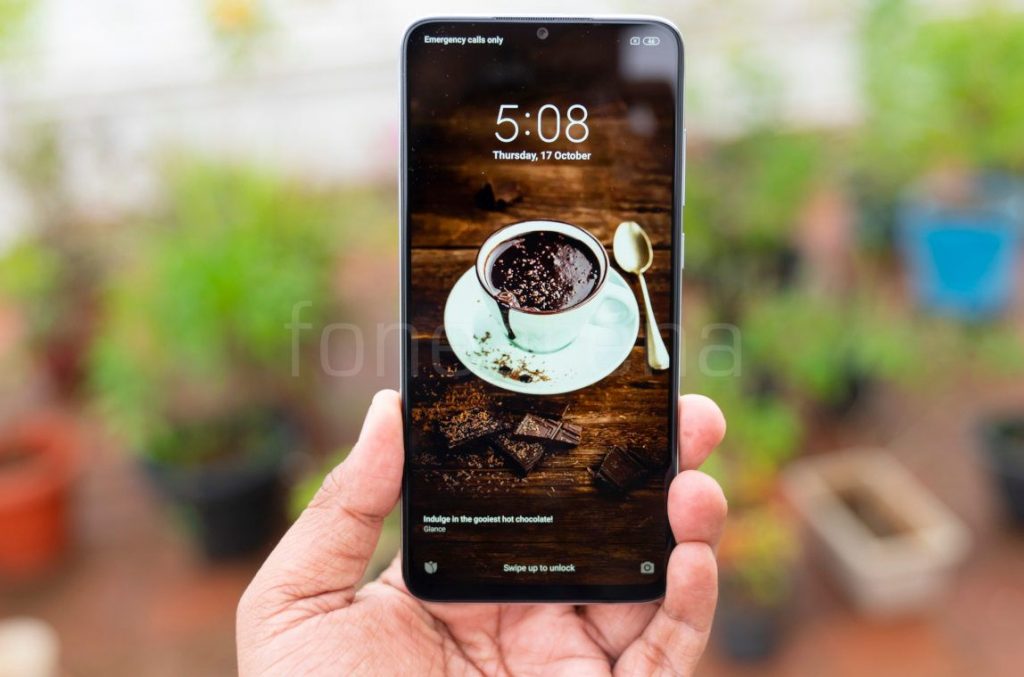
Coming to the performance, the phone is powered by an Octa-Core MediaTek Helio G90T 12nm Mobile Platform that has two Cortex A76 CPUs clocked at 2.05GHz per core and other six Cortex A55 CPUs are clocked at 2GHz per core, comes with 800MHz ARM Mali G76 Quad-Core GPU and up to 8GB LPDDR4x RAM. At the launch the company said that it is faster than the Snapdragon 675 that powers the Redmi Note 7 Pro and the Snapdragon 712 used by the competitors like realme 5 Pro and the realme XT.
As you can see from the synthetic benchmark scores below, it is clear that the new MediaTek Helio G90T SoC is better than the Snapdragon 712 and Snapdragon 730 in most cases, it comes close to Snapdragon 845. We did not face any issues or frame drops in the graphic-intensive games, and PUBG works in full HDR graphics. It gets a bit warm on intensive gaming and 4G data use and the temperature goes up to 44-degress, but it doesn’t too hot to handle, thanks to liquid cooling that promises temperature reduction of 4 to 6 degrees. That said, check out some synthetic benchmark scores below.

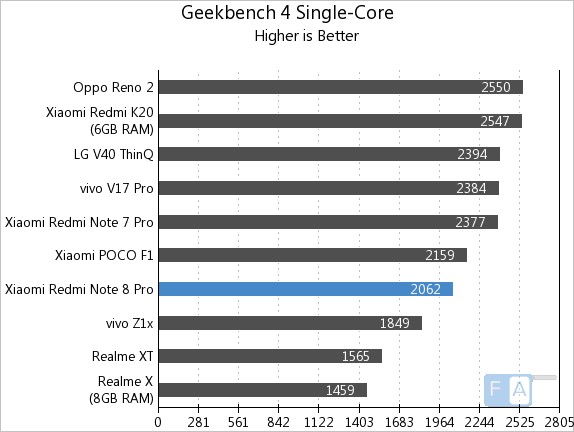
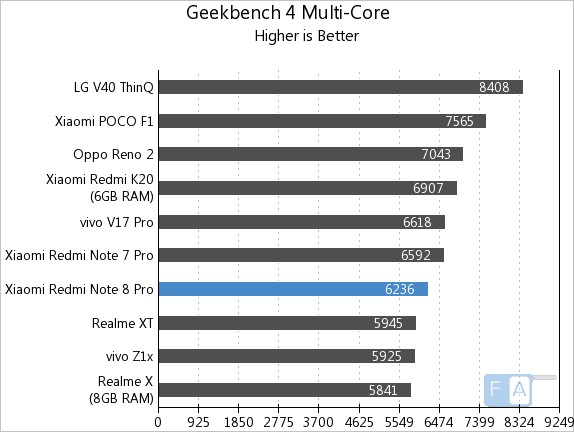
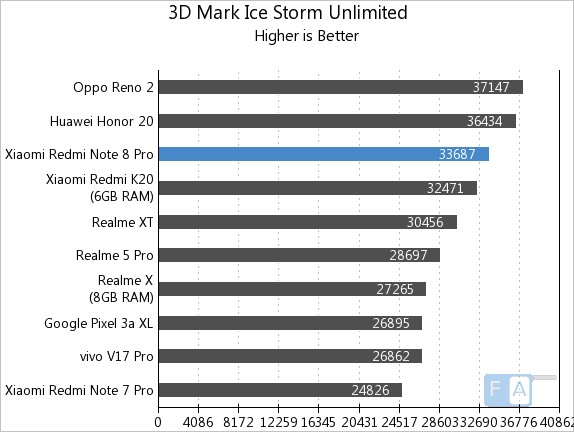
Inside the Game Booster in the Security app, there are several customization options such as Performance mode that offers bandwidth priority, optimized touch controls and enhanced audio. Check out the gaming review below.
Battery life
Coming to the battery life, the 4500mAh (typical) built-in battery, is the biggest ever on a Redmi Note series. It lasts for a whole day even with heavy use, and with average use it lasts for two days, thanks to optimization in the MIUI 10. It got over 7 hours of screen on time with a day of use, as you can see in the screenshots. Since the phone has support for Pump Express 18W fast charging, it takes about 2 hours for 0 to 95%, 2 hours and 15 minutes from 0 to 100%, and 0 to 50% takes 55 minutes using the bundled 18W charger.
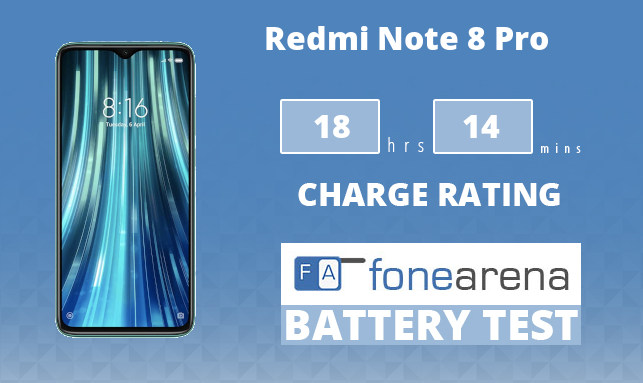
It achieved One Charge Rating of 18 hours and 14 minutes in our battery test, which is decent for a phone with a 4500mAh battery. This is slightly less compared to 18 hours and 49 minutes score of Samsung Galaxy M30s with a larger 5000mAh battery. In face the Redmi Note 7 Pro was also slightly better than this scoring 18 hours and 34 minutes. Battery life is based on different factors such as software optimization and the processing power that requires to power the phone, so if the phone lasts for a day with heavy use, it is good.
Conclusion
At a starting price of Rs. 14999 for the 6GB RAM version, the Redmi Note 8 Pro is a huge improvement over the predecessor, with slight increase in price due to increase in RAM to 6GB. The LCD screen with HDR support and minimal bezels is good, if you don’t care about AMOLED and Always-on-display, large display with a smaller notch and minimal bezels, good cameras, Aura design with premium glass back, water-resistant body with IP52 rating, smooth performance, good gaming performance and all-day battery life with support for fast charging. There is still no clarity on the lack of HD playback in streaming apps, and if this will be enabled with an update, and you have to manage ads in the UI.
Competition
The realme XT is a direct competition offering a simlar quad-camera setup, however this has an AMOLED display and an in-display fingerprint scanner. There is also the cheaper Galaxy M30s, again with an AMOLED screen, and a huge 6000mAh battery, but with a plastic body. Vivo Z1x is another phone with an AMOLED screen, fast in-display fingerprint scanner, and ultra-fast 22.5W charging, but this lacks an expansion slot.
Availability
Priced at Rs. 14,999 for the 6GB RAM with 64GB storage version, Rs. 15,999 for the 6GB RAM with 128GB storage version and Rs. 17,999 for 8GB RAM with 128GB storage version, it is currently available through flash sale on Amazon.in, mi.com and Mi Home Stores, and will soon be available across all other offline stores.
Pros
- Large ‘Dot Notch’ HDR display is good
- Good cameras
- Smooth performance and good gaming performance
- Premium glass body
- Water-resistant body (IP52)
- Dedicated Dual SIM and microSD slots
- Good battery life with 18W fast charger in the box
Cons
- Camera bump
- Low-light camera performance could be better
- Might be bulky for some
- Doesn’t support HD content on Netflix and Amazon Prime Video
- Bloatware and ads in UI

